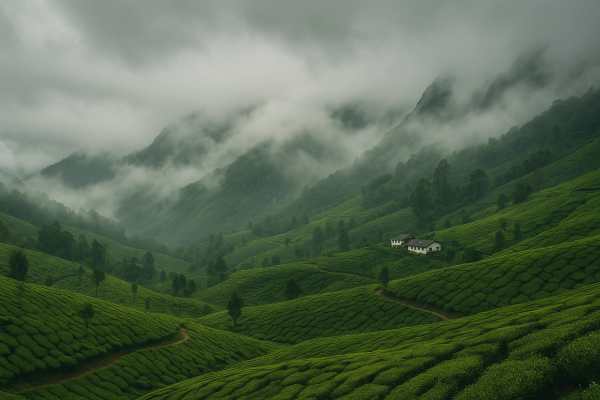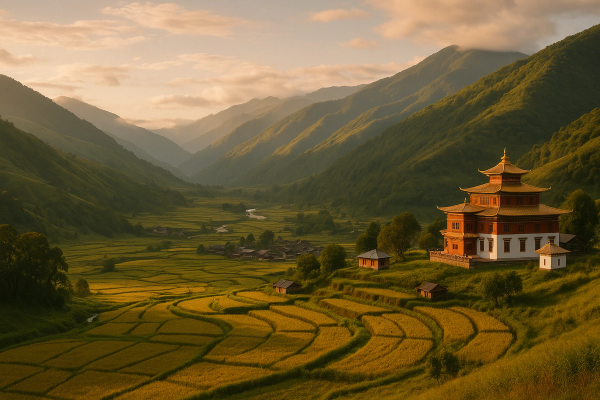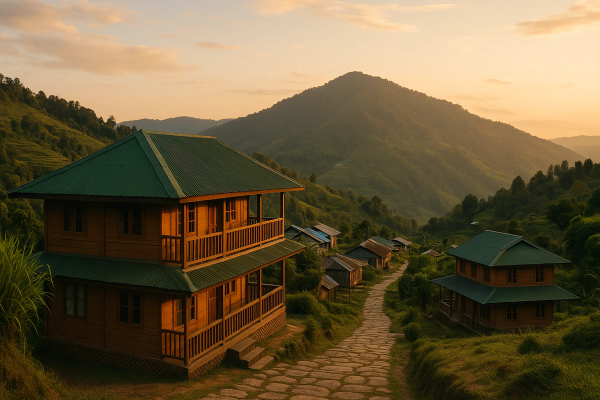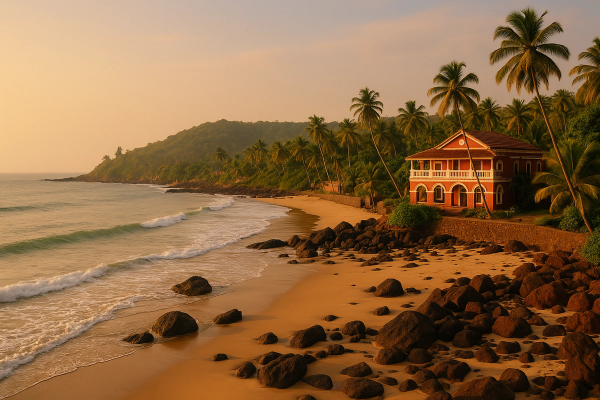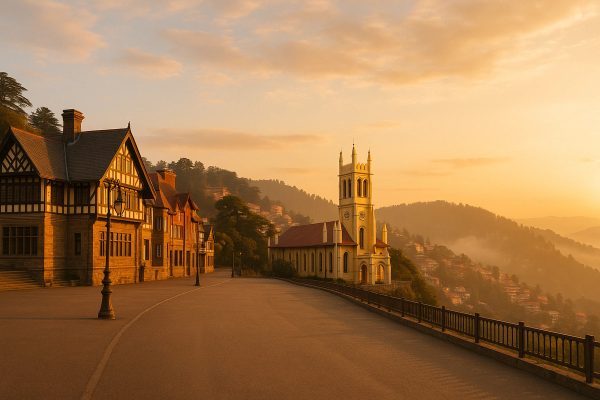Okay, Let's Talk Volcanoes: My Day Trip to Hawaii Volcanoes National Park#
So, the Big Island, right? You hear Hawaii and maybe think beaches, luaus... and yeah, it's got those. But the real star, the thing that literally made this island? The volcanoes. I’d seen pictures, sure, but nothing really prepares you for standing on the edge of a massive caldera or walking through a tunnel carved by molten rock. Spending a day at Hawaii Volcanoes National Park wasn't just a 'check the box' thing for me; it was genuinely one of the most mind-blowing experiences. It’s this raw, powerful place that feels ancient and brand new all at once. If you're planning a Big Island adventure, you absolutely have to carve out time for this place. We're talking lava tubes, steaming craters, and trails that cross solidified magma flows. Pretty wild stuff.¶
Honestly, I was kinda buzzing the whole drive there. It feels different heading towards an active volcano zone, you know?
What's the Big Deal About This Park Anyway?#
Basically, Hawaii Volcanoes National Park is home to two of the world's most active volcanoes: Kīlauea and Mauna Loa. Kīlauea is the main player you'll likely interact with on a day trip, constantly reshaping the landscape. It's not just rocks and steam, though. This place is deeply significant in Hawaiian culture – it's the home of Pele, the goddess of volcanoes and fire. You feel that reverence when you're there. It’s a UNESCO World Heritage site and an International Biosphere Reserve, which basically means it's super important both culturally and ecologically. Forget sterile museum exhibits; this is geology happening right now (well, sometimes very visibly, sometimes more subtly). It’s a must for any Hawaii volcano travel itinerary.¶
When Should You Go? Timing Your Volcano Visit#
Okay, real talk: Hawaii's weather is pretty great year-round, especially down at sea level. But up at the park? It's different. The summit of Kīlauea is over 4,000 feet, so it gets way cooler and often rainier than the coast. Like, pack layers, seriously.¶
Dry Season (Summer - June to August)#
Usually sunnier, which is nice for views. But it's also peak tourist season, so expect more crowds, especially midday at popular spots like the Thurston Lava Tube. Accommodation prices might be higher too.¶
- Pro: Generally clearer skies for those big caldera views.
- Con: Busier trails and viewpoints. Gotta share the magic.
Wet Season (Winter - November to March)#
You'll definitely encounter more rain, sometimes just passing showers, sometimes a full-on soggy day. Fog can also roll in and obscure views. BUT, fewer people, potentially lower prices, and the rainforest parts (like near the lava tube) look extra lush and mysterious. Also, sometimes volcanic activity is more visible at night/dawn/dusk, and the longer nights help.¶
- Pro: Fewer crowds, everything feels greener.
- Con: Higher chance of rain and fog. Bring a good rain jacket!
Shoulder Seasons (Spring & Fall)#
I went in late April, and honestly? It felt like a good sweet spot. Not too crowded, weather was mixed (some sun, some mist, one decent shower), but totally manageable. It felt like a good balance. September/October could be similar.¶
My personal take? Aim for shoulder season if you can swing it. Just be prepared for any weather, any time of year. It's a volcano mountain, after all!
Getting There & Navigating the Park#
The park entrance is off Highway 11. If you're staying in Hilo, it's about a 45-minute drive. From the Kona side, it's much longer, like 2 to 2.5 hours, depending on traffic and exactly where you are. You absolutely need a car for this Big Island adventure. There's no real public transport to or within the park that's practical for hitting the main spots.¶
Driving Yourself#
This is the way to go. Grab a rental car at either Hilo (ITO) or Kona (KOA) airport. The roads inside the park are paved and generally well-maintained. The main route is Crater Rim Drive, which loops around the Kīlauea caldera, and Chain of Craters Road, which heads down towards the coast.¶
- Entrance Fee: It was $30 per vehicle when I went, and the pass is good for 7 days. Check the official NPS website for current fees just in case.
- Gas: Fill up before you enter the park. There are no gas stations inside. Volcano Village, just outside the entrance, has gas, but it might be pricier.
- Navigation: Cell service can be spotty. Download an offline map (like Google Maps offline) or grab a paper map at the visitor center. Signs are pretty good though.
Pro Tip: Arrive early! Like, aim to be at the gate by 8 or 9 AM, especially if you want to hike the popular Kīlauea Iki Trail or see Thurston Lava Tube before the tour buses roll in.
Where to Stay (If You're Making it More Than a Day)#
Since this is focused on a day at the park, you might be staying elsewhere on the island. But if you want to be close:¶
- Volcano Village: Right outside the park entrance. Cute B&Bs, vacation rentals, a couple of small lodges. Very convenient, cooler climate, rainforest vibes. Limited dining options, though.
- Volcano House Hotel: The only hotel inside the park. Historic lodge right on the caldera rim. Amazing views (if no fog!), but books up way in advance and isn't cheap. Worth checking out even just for the view from their lobby/restaurant.
- Hilo: About 45 mins away. Much larger town, way more hotel/rental options, restaurants, shops. Good base if you want to explore the east side too.
I stayed in Hilo and just drove up for the day, which worked out fine for me.¶
The Main Event: What To See & Do in Your Day#
Okay, buckle up. Even with just a day, you can see some seriously cool stuff. Here's kinda how my day went, hitting the highlights:¶
1. Kīlauea Visitor Center (Start Here!)#
Seriously, make this your first stop. Rangers can tell you about current conditions – Is there visible lava? (Often not easily accessible, depends on eruption status). Which trails are open/closed? Any safety alerts? Plus, grab that map! They also have exhibits explaining the geology and culture.¶
Don't skip this! Ranger advice is gold, especially with how dynamic this park is.
2. Steam Vents & Sulphur Banks (Haʻakulamanu)#
Just a short drive from the visitor center. You'll see steam rising from the ground – pretty wild. Walk the short paved path past the Sulphur Banks... and yeah, it smells like sulphur (rotten eggs, basically). Kinda cool to see the volcanic gases escaping and staining the rocks yellow.¶
- Time needed: 15-20 minutes.
- Accessibility: Easy, paved path.
3. Kīlauea Overlook & Jaggar Museum Area (Check Status)#
This area offers the classic view into Halemaʻumaʻu crater within the larger Kīlauea caldera. HOWEVER, the Jaggar Museum itself has been closed since the 2018 eruption and summit collapse significantly changed the area. Check the NPS website for current access restrictions around the caldera rim near here. The main overlook near the visitor center is usually open though and gives awesome views.¶
- Time needed: 20-30 minutes (for viewing).
- Tip: Mornings often have clearer views before clouds roll in.
4. Thurston Lava Tube (Nāhuku)#
This was way cooler than I expected. It's a short walk through lush rainforest to the entrance of this massive cave-like tube where lava once flowed. It's lit inside, but still feels kinda eerie and ancient. The tube itself isn't super long (maybe a 15-20 minute loop walk total?), but it gets CROWDED. Go early or late in the day if you can.¶
- Time needed: 30-45 minutes (including the walk through the forest).
- Keywords: Thurston Lava Tube, Hawaii Volcanoes National Park.
It's damp and cool inside, even on a hot day. The scale is impressive – imagine rivers of lava flowing through here!
5. Kīlauea Iki Trail (The MUST-DO Hike)#
Okay, if you do one hike, make it this one. The Kīlauea Iki Trail is about a 4-mile loop that takes you down through rainforest, across the floor of a solidified lava lake (from a spectacular 1959 eruption), and back up the other side. Walking across that crater floor... man, it feels like another planet. You see steam vents, weird rock formations, and pioneer plants starting to grow back.¶
- Time needed: 2-3 hours (allow plenty of time, it's steep in sections).
- Difficulty: Moderate. The descent and ascent are about 400 feet each way, with switchbacks. The crater floor is uneven.
- Bring: Water, snacks, sunscreen, hat, sturdy shoes. No shade on the crater floor!
- Keywords: Kīlauea hike, Hawaii Volcanoes National Park, Big Island adventure.
Not gonna lie, the climb back up got my heart pumping, but SO worth it. Standing in the middle of that crater is unforgettable.
6. Drive Down Chain of Craters Road#
If you have time after your hike, this scenic drive takes you from the summit area down towards the coast (about 19 miles one way). You pass several pit craters, see vast lava flows from different eras, and eventually reach the coast where lava has flowed into the sea in the past. The landscape changes dramatically as you descend.¶
- Time needed: 1.5 - 2 hours round trip (minimum, more if you stop a lot).
- Highlights: Pullouts for crater views, Kealakomo Overlook (amazing coastal panorama), Hōlei Sea Arch (at the end of the road).
- Note: No food, water, or gas along this road. Bring everything you need.
Food & Drink: Fueling Your Volcano Exploration#
Options inside the park are limited, tbh. Best bet is to pack your own lunch and snacks.¶
- Pack Your Own: Easiest and most flexible. Lots of great picnic spots.
- Volcano House Restaurant/Lounge: Inside the hotel. Offers sit-down meals with incredible caldera views (again, if no fog!). Can be pricey and busy.
- Kilauea Military Camp (KMC): Sometimes has food options open to the public (check current status), usually casual fare like pizza or burgers. Located near the Jaggar Museum area.
- Volcano Village: Just outside the park, has a couple of general stores and a few cafes/restaurants (like Thai Thai, Ōhelo Café, Kilauea Lodge). Good for grabbing something before or after your park visit.
I packed sandwiches, fruit, and way more water than I thought I'd need. Especially for the Kīlauea Iki hike, bring extra water!
Quick Tips for Your Park Day#
- Layers are Key: Weather changes fast. Bring a rain jacket, maybe a light fleece, even if it's sunny when you start.
- Sturdy Shoes: You'll be walking on uneven lava rock, even on short paths. Hiking boots or solid sneakers are best.
- Sun Protection: Hat, sunglasses, sunscreen. Even if it's cloudy, the UV can be strong at elevation.
- Water & Snacks: Crucial. Don't underestimate how much water you'll drink, especially if hiking.
- Check Conditions: ALWAYS check the official NPS website (www.nps.gov/havo) right before your visit for alerts on volcanic activity, air quality (VOG - volcanic smog), trail closures, etc.
- Respect the 'Aina (Land): Stay on marked trails, don't take rocks or plants, pack out everything you pack in. This is a sacred place.
- Safety First: Heed all warning signs. Volcanic fumes can be hazardous for some people (respiratory issues, pregnant women, young kids). Be aware of unstable cliffs and earth cracks.
Sample 1-Day Itinerary (Hitting the Highlights)#
- 8:00 AM: Arrive at park entrance, pay fee.
- 8:15 AM: Kīlauea Visitor Center (check conditions, grab map).
- 8:45 AM: Steam Vents & Sulphur Banks (quick walk).
- 9:15 AM: Kīlauea Overlook (views into Halemaʻumaʻu).
- 9:45 AM: Drive to Thurston Lava Tube (Nāhuku).
- 10:00 AM: Walk through Thurston Lava Tube (beat the crowds!).
- 10:45 AM: Drive to Kīlauea Iki Overlook/Trailhead.
- 11:00 AM - 1:30 PM: Hike the Kīlauea Iki Trail (allow 2.5 hours).
- 1:30 PM: Picnic lunch at a scenic overlook.
- 2:15 PM: Start driving down Chain of Craters Road.
- 2:15 PM - 4:30 PM: Explore Chain of Craters Road, stop at viewpoints, see Hōlei Sea Arch.
- 4:30 PM: Start driving back up Chain of Craters Road.
- 5:15 PM onwards: Check sunset views (maybe back at Kīlauea Overlook) or head out of the park. If there's safe/accessible lava viewing at night (check ranger info!), adjust timing to stay after dark.
This is just a suggestion, obvs. Adjust based on your energy levels and what interests you most! Maybe you skip the long drive down Chain of Craters and do another shorter hike instead.
Volcano Vibes: Traveling Responsibly#
This park is powerful and culturally significant. Please be a good visitor!¶
- Respect Pele: Don't take rocks or sand (seriously, it's disrespectful and believed to bring bad luck). Stay on trails. Leave offerings only if you understand the cultural protocols (better to just observe respectfully).
- Protect the Ecosystem: It's a fragile environment. Stay on marked paths to avoid damaging rare plants or disturbing nesting birds like the Nēnē (Hawaiian goose).
- Leave No Trace: Pack out everything. Trash cans are limited.
- Air Quality Awareness: Volcanic smog (VOG) can be an issue. Check the air quality forecast if you have respiratory problems.
So, Was It Worth It? Final Thoughts#
Uh, YES. Absolutely. Hawaii Volcanoes National Park is unlike anywhere else I've been. Walking across a crater floor that was molten lava just decades ago? Seeing steam rise from the earth? Exploring a pitch-black (well, lit now) Thurston Lava Tube? It’s a humbling, awe-inspiring experience.¶
It's more than just sightseeing; it's feeling the power of the planet. Even if you don't see bright red flowing lava (which isn't always happening or safely accessible), the scale of the landscapes, the evidence of past eruptions, and the sheer energy of the place is incredible. It’s a definite highlight of any Hawaii volcano travel plan.¶
If you get the chance to go, just do it. Pack smart, respect the 'aina, and prepare to be amazed. It's a Big Island adventure you won't forget. Kinda makes you feel small in the best way possible, you know?¶
Have you been to Hawaii Volcanoes National Park? What was your favorite part? Drop a comment below! And if you're planning a trip, feel free to ask questions!¶








